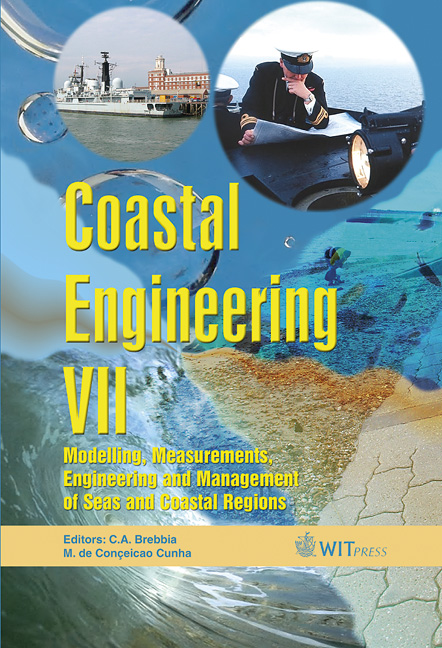Modelling Circulation In A Southern Italy Coastal Basin
Price
Free (open access)
Transaction
Volume
78
Pages
10
Published
2005
Size
1,839 kb
Paper DOI
10.2495/CE050141
Copyright
WIT Press
Author(s)
F. De Serio & D. Malcangio
Abstract
The purpose of the present work is the study of particular hydrodynamic aspects of Mar Piccolo, a basin located in the Northern side of the Gulf of Taranto in the Ionio Sea (Italy), by means of mathematical modelling. A first analysis has been driven, thus realizing a test case with simple hypothesis, referring to data from the literature, in order to validate two 3D hydrodynamic models, i.e. the Princeton Ocean Model and the MIKE 3. Once a quite good agreement wasobserved between the outputs of the tested models, a further comparison was considered. The results of the two models have been compared with some circulation structures proposed in the literature, in analogous conditions. Successively, both models have been forced by a further input, in order to observe the response of the circulation to input modifications. The direct comparison between simulation results and field measurements collected during surveys is the future development of the ongoing research. Keywords: tidal circulation, wind-induced circulation, circulation structures. 1 Introduction The Mar Piccolo is a coastal basin of about 21.7 km 2 , the basin being about 200 thousand m 3 and the average depth about 7.0 m (Figure 1). It is divided into two interconnected embayments, through the channel of the Punta Penna Bridge, whose width of 500 m in reality is reduced by surrounding shoals and mussel-farms. The western (first) embayment takes up about 9 km 2 and has a maximum depth of about 13 m. It is connected with the open sea through two channels. The first one, the Canale Navigabile, is an artificial channel, 58 m wide and 12 m deep and the second one, the Canale Porta Napoli, is natural and it is 150 m
Keywords
tidal circulation, wind-induced circulation, circulation structures.





